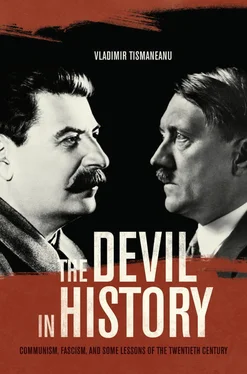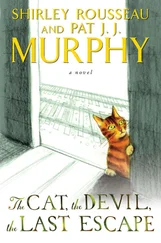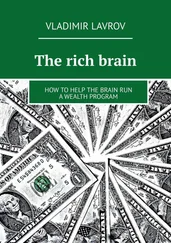Livre Noir du communisme. I continued my research in June 2002 as a one-month fellow at the Institute for the Sciences of Man (IWM) in Vienna. In January 2003, I was a fellow at Indiana University’s Institute for the Humanities, where I gave a lecture on the totalitarian temptation and benefited from Jeffrey C. Isaac’s insightful comments. In 2008-2009, as a fellow at the Woodrow Wilson International Center for Scholars, I conducted research on twentieth-century utopian radicalism as well as moral justice in post-Communist Romania. I benefited from the exceptional research skills of my two assistants, Eliza Gheorghe and Mark Moll. Books continued to come out that inspired me to rethink some of the early hypotheses, including Robert Gellately’s path-breaking work
Lenin, Stalin, Hitler: The Age of Social Catastrophe (2007), which I reviewed in the outstanding journal
Kritika. Another important volume was
Beyond Totalitarianism (2009), edited by Sheila Fitzpatrick and Michael Geyer. In April 2009, Timothy Snyder invited me to participate in the seminar “Hitler and Stalin: Comparisons Renewed” at Yale University, where I exchanged views with several distinguished scholars, including Saul Friedländer, Norman Naimark, Lynne Viola, and Amir Weiner. Throughout these years, in his gently encouraging way, Stanley Holwitz, who had superbly edited my
Stalinism for All Seasons at the University of California Press (2003), continued to inquire about the status of the manuscript. I kept reassuring him that I had not forgotten it. In fact, I had continued to think only about this, and in March 2010 I gave a lecture at the University of California at Berkeley titled “The Devil in History,” which presented the ideas published here in the prologue. Following that presentation, I had long discussions with historians John Connelly and Yuri Slezkine, who provided me with provocative suggestions.
Finally, in February 2011, the manuscript was completed. I sent it to Niels Hooper at the University of California Press, who expressed interest in the project. I received two immensely insightful peer reviews and followed many of the reviewers’ suggestions, especially in emphasizing the peculiar nature of the Bolshevik worshipping of the party, the connections between Marx and Lenin, and the still amazing infatuation of important intellectuals with the Communist utopia. I have developed many ideas included in this book in articles published since 2005 in the pages of Times Literary Supplement as well as essays for the excellent Romanian monthly Idei in dialog , edited by the brilliant philosopher Horia-Roman Patapievici.
This achievement would not have been possible without the enthusiastic commitment and creative research offered by Bogdan Cristian Iacob, a graduate student at the Central European University (he defended his dissertation in June 2011) who became my closest collaborator in 2007. I wish to express cordial thanks to all those who, throughout these years, have generously been my engaging partners in this endeavor. First and foremost, I express my gratitude to my wife, Mary Sladek, and my son, Adam Volo Tismaneanu, with whom I had endless discussions about the totalitarian monsters and their legacies. Mary read various drafts of this book and offered insightful suggestions. On various occasions, Adam asked me to explain the similarities and differences between Hitler and Stalin. Like so many of us, he still wonders who was worse. Intellectual friends and colleagues whose ideas and suggestions have helped me shape my own interpretations and who undoubtedly deserve mention, including some who have passed away, include Bradley Abrams, Dragos Paul Aligică, Cătălin Avramescu, Matei Călinescu, Daniel Chirot, Aurelian Craiutu, John Connelly, Michael David-Fox, Karen Dawisha, Ferenc Fehér, Dan Gallin, Pierre Hassner, Agnes Heller, Jeffrey Herf, Paul Hollander, Dick Howard, Charles Gati, Irena Grudzinska-Gross, Jan T. Gross, Jeffrey C. Isaac, Constantin Iordachi, Ken Jowitt, Tony Judt, Bart Kaminski, Gail Kligman, Mark Kramer, Claude Lefort, Gabriel Liiceanu, Mark Lichbach, Monica Lovinescu, Steven Lukes, Daniel Mahoney, Adam Michnik, Mircea Mihăieș, Iulia Motoc, Vlad Mureșan, Mihail Neamțu, Virgil Nemoianu, Martin Palouš, Horia-Roman Patapievici, Marta Petreu, Andrei Pleșu, Cristian Preda, Ilya Prizel, Saskia Sassen, Marci Shore, Timothy Snyder, Vladimir Solonari, Ioan Stanomir, Radu Stern, Valeriu Stoica, Mihai Șora, Gale Stokes, Robert C. Tucker, Cristian Vasile, Christina Zarifopol-Illias, Viktor Zaslavsky, Vladislav Zubok, Annette Wieworka. Special thanks to my graduate students at the University of Maryland, who have been remarkable partners of dialogue during the seminars on Marxism, Bolshevism, Fascism, Nazism, and the meanings of political radicalism.
October 10, 2011
Prologue
Totalitarian Dictators and Ideological Hubris
When I used the image of Hell, I did not mean this allegorically, but literally: it seems rather obvious that men who have lost their faith in Paradise will not be able to establish it on earth; but it is not so certain that those who have lost their belief in Hell as a place of the hereafter may not be willing and able to establish on earth exact imitations of what people used to believe about Hell. In this sense I think that a description of the camps as Hell on earth is more “objective,” that is, more adequate to their essence than statements of a purely sociological or psychological nature.
—Hannah Arendt,
Essays on Understanding
No century witnessed and documented so much atrocious suffering, organized hatred, and devastating violence as the twentieth. The concentration camps represented the ultimate humiliation of human beings, the destruction of their identity, their inescapable dehumanization, and their mass annihilation. Neither Communism nor Nazism can be understood without taking into account the centrality of what Albert Camus once called l’univers concentrationnaire. In his book If This Is a Man , the Italian writer and Auschwitz survivor, Primo Levi, wrote:
Perhaps it is not possible to comprehend, indeed perhaps one should not even try, since to comprehend is almost to excuse. Let me explain: to “comprehend” a human intention and action means (even etymologically) to contain it, to contain its perpetrator, by putting oneself in his place, identifying with him. Now, no normal person could ever identify with Hitler, Himmler, Goebbels, Eichmann, and countless others. While this appalls us it is also relief since it is probably just as well that their words (and also, alas their deeds) should remain beyond our comprehension. Those words and deeds are inhuman, indeed anti-human, without historical precedent and barely comparable to the cruelest manifestations of the biological struggle for existence. 1
In Stalinized Romania between 1949 and 1951, a diabolical experiment took place, meant to transform the six hundred inmates of the Pitești penitentiary (all students arrested for real or imagined antiregime activities) into “new men.” The method, apparently inspired by Soviet pedagogue Anton Makarenko’s teachings as adopted by the secret police in the Soviet Union and its satellites, was supposed to make the victims their own tormentors and thereby “educators.” A phalanx of regime collaborators, headed by a former Fascist arrested in 1948 on charges of having lied about his past, engaged in unspeakable, barbaric brutalities against their fellow prisoners, who experienced two levels of transformation: the external re-education and the inner one, when the victim turned into a tormentor. There were only two possibilities for the inmates: to become accomplices or to die under horrifying conditions. In fact, as one of the very few survivors of this lurid experiment said, there was a third possibility: to go insane.
Читать дальше












